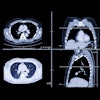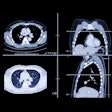
It may be hard to believe that the first digital breast tomosynthesis (DBT) device hit the market a mere seven years ago, given how ubiquitous DBT has become in clinical practice. Since its early days, DBT has been lauded for its ability to find more cancers and reduce recalls when compared with digital mammography, benefits that some say directly address concerns critics raise about the supposed "harms" of screening mammography.
Now, as radiologists gain more experience using DBT, the clinical questions researchers are exploring regarding the technology have become more sophisticated. Attendees of this year's RSNA meeting will encounter a variety of studies that examine everything from whether DBT reduces the incidence of interval cancers and how it works in women of particular ages, ethnicities, or breast densities to how it performs as a biopsy guidance tool.
Yet with all the continued excitement about DBT, it won't be the only topic under discussion at RSNA 2018 with respect to women's imaging. The RSNA is hosting a number of refresher courses and controversy sessions this year that will address subjects such as breast cancer screening -- what the data say about it and the pros and cons of personalized screening protocols; the benefits of technologies such as contrast-enhanced digital mammography, PET, PET/MRI, and molecular breast imaging; and how best to manage ductal carcinoma in situ.
There will also be lively debate over the role of ultrasound in breast cancer screening and diagnosis, from its performance over the long term, the efficacy of shear-wave elastography for distinguishing between malignant and benign lesions, and automated breast ultrasound, as well as the potential of sonography to diagnose and treat uterine fibroids, endometriosis, and endometrial cancer.
Finally, you'll hear lots of conversation on how artificial intelligence (AI) can improve or enhance breast imaging, with presentations ranging from how to incorporate patient characteristics in breast cancer screening into deep learning networks, whether AI can improve the accuracy and efficiency of DBT, and whether DBT's radiation dose can be reduced using AI algorithms.
For highlights of just some of the many women's imaging research and posters scheduled for presentation at this year's meeting, read on. To view the complete listing of abstracts, view the RSNA 2018 meeting program.



















